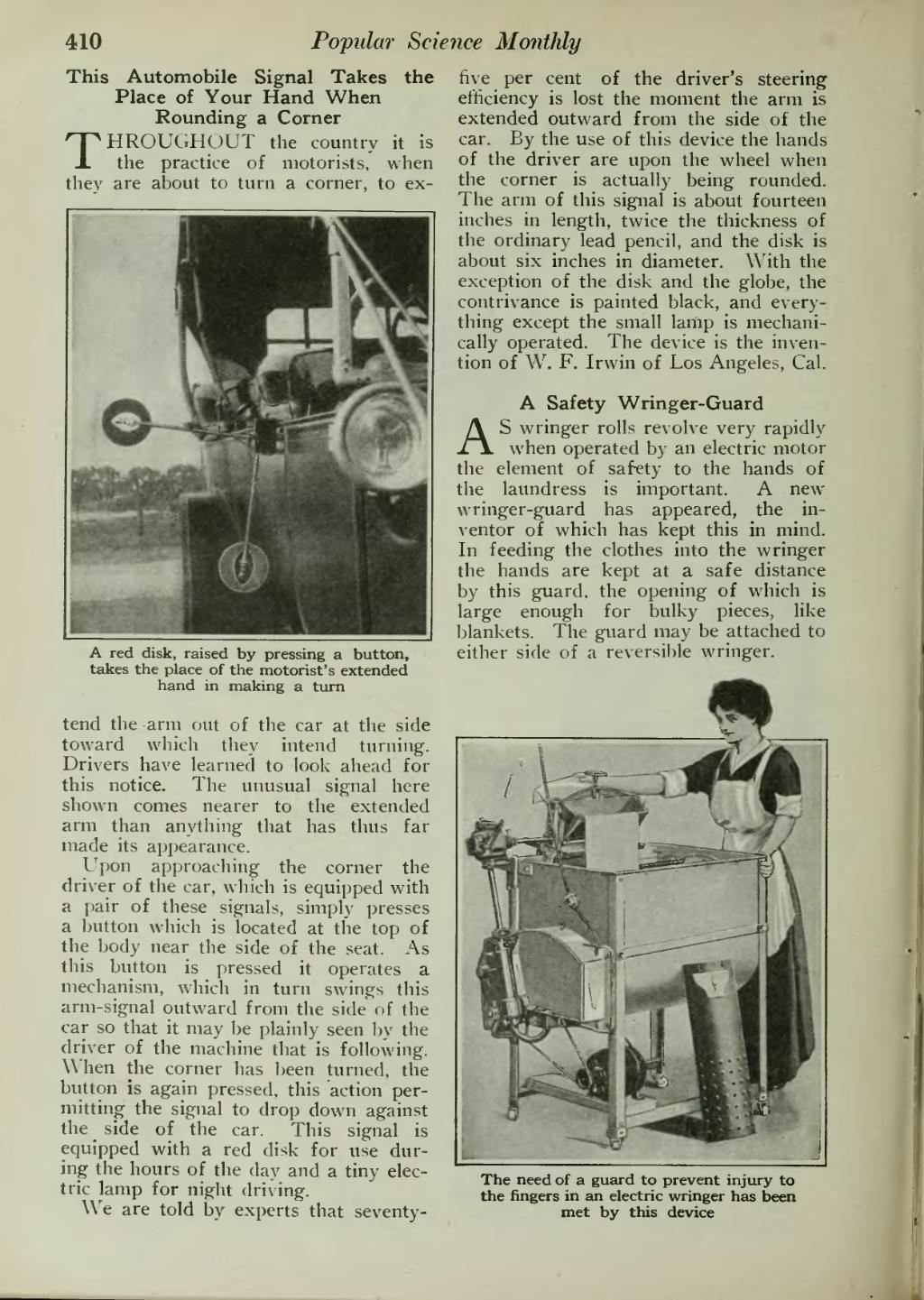This Automobile Signal Takes Place of Your Hand When Rounding a Corner
THROUGHOUT the country it is the practice of motorists, when they are about to turn a corner, to extend the arm out of the car at the side toward which they intend turning. Drivers have learned to look ahead for this notice. The unusual signal here shown comes nearer to the extended arm than anything that has thus far made its appearance.

A red disk, raised by pressing a button, takes the place of the motorist's extended hand in making a turn
Upon approaching the corner the driver of the car, which is equipped with a pair of these signals, simply presses a button which is located at the top of the body near the side of the seat. As this button is pressed it operates a mechanism, which in turn swings this arm-signal outward from the side of the car so that it may be plainly seen by the driver of the machine that is following. When the corner has been turned, the button is again pressed, this action permitting the signal to drop down against the side of the car. This signal is equipped with a red disk for use during the hours of the day and a tiny electric lamp for night driving.
We are told by experts that seventy-five per cent of the driver's steering efficiency is lost the moment the arm is extended outward from the side of the car. By the use of this device the hands of the driver are upon the wheel when the corner is actually being rounded. The arm of this signal is about fourteen inches in length, twice the thickness of the ordinary lead pencil, and the disk is about six inches in diameter. With the exception of the disk and the globe, the contrivance is painted black, and everything except the small lamp is mechanically operated. The device is the invention of W. F. Irwin of Los Angeles, Cal.
A Safety Wringer-Guard
AS wringer rolls revolve very rapidly when operated by an electric motor the element of safety to the hands of the laundress is important. A new wringer-guard has appeared, the inventor of which has kept this in mind. In feeding the clothes into the wringer the hands are kept at a safe distance by this guard, the opening of which is large enough for bulky pieces, like blankets. The guard may be attached to either side of a reversible wringer.

The need of a guard to prevent injury to the fingers in an electric wringer has been met by this device
